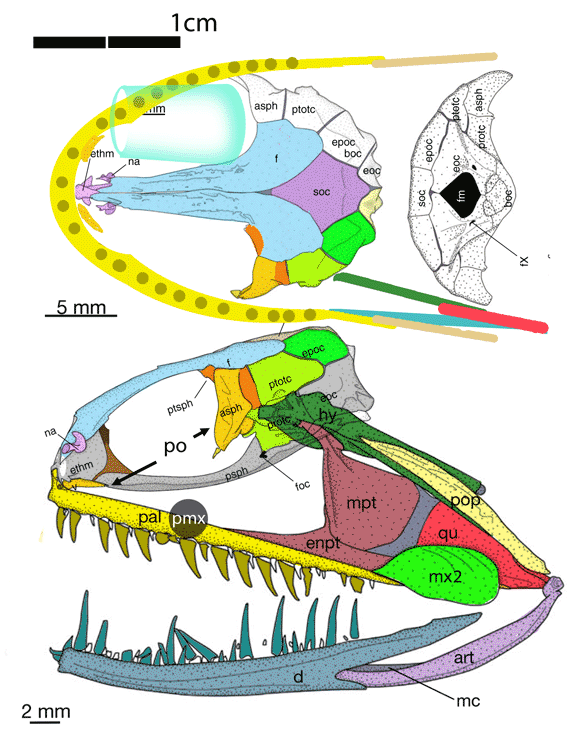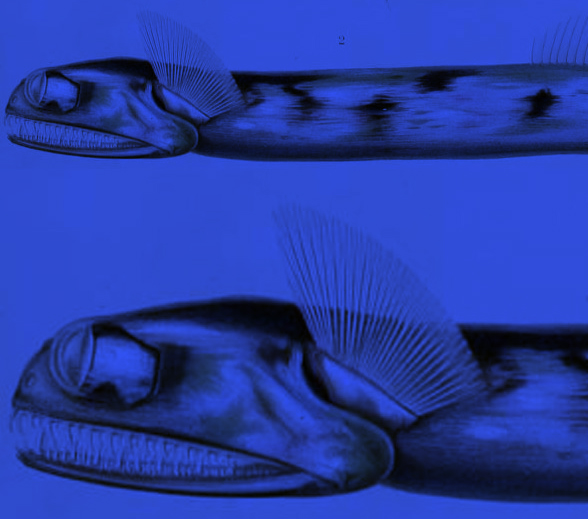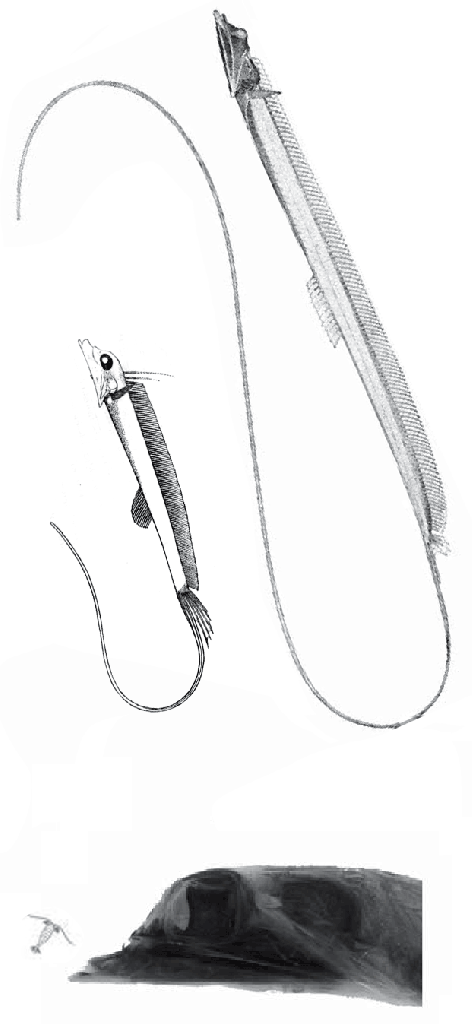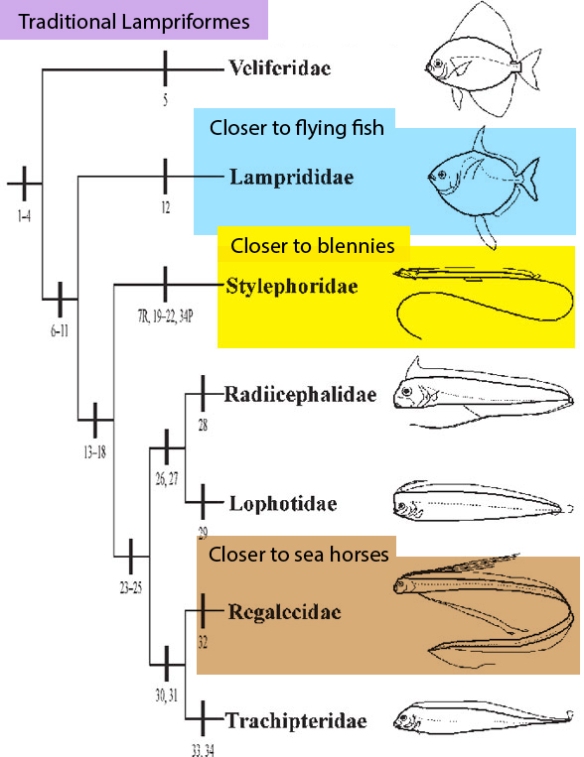Untested traits include
those cylindrical eyeballs and that elongate lower caudal fin.
Gigantura indica
(Brauer A 1901, Konstantinidis and Johnson 2016; 20 cm standard length, not counting the caudal fin, Figs 1–3) is the extant telescope fish. Comparisons with sister taxa indicate the indicated ‘palatine’ with teeth is actually the premaxilla in figure 2 from Gregory 1933. The toothless maxilla (green) is located at the posterior mandible. The postorbital (=circumorbital ring) is reduced to two vestiges. This small fish can swallow prey larger than itself.
Stylephorus chordatus
(Shaw, 1791, Regan 1924, Figs 4, 5) is the extant tube-eye or thread-tail. It was considered an oarfish relative (Fig 6), but here nests with Gigantura (Figs 1–3). Note the large eyes and flexible neck. Convergent with seahorses and oarfish, the tube-eye also feeds on tiny plankton sucked in as its tubular mouth enlarges the oral cavity by 40x (Figs 4, 5).
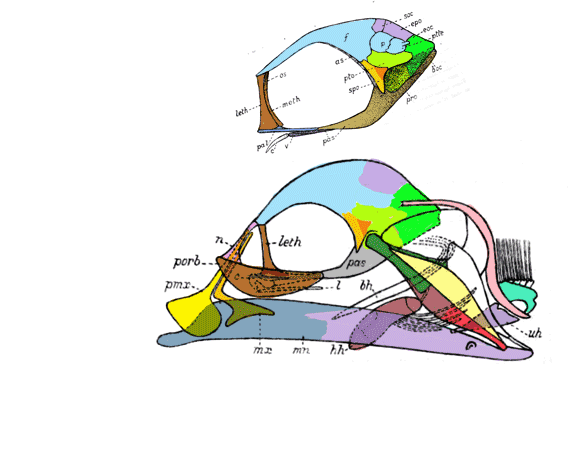
Both of these odd deep-sea fish
find a last common ancestor in the large reptile tree (LRT, 2223 taxa) close to Acanthemblemaria, the tube blenny (Fig 7). So all three are blennies.
Acanthemblemaria aceroi
(genus: Metzelaar 1919; species: Hastings, Eytan and Summers 2020) is a newly described tube blenny described with a µCT scan skeleton. Note the vestige maxilla (green) detached from the lacrimal (tan). Here it nests with Neoclinus, the sarcastic fringhead blenny.
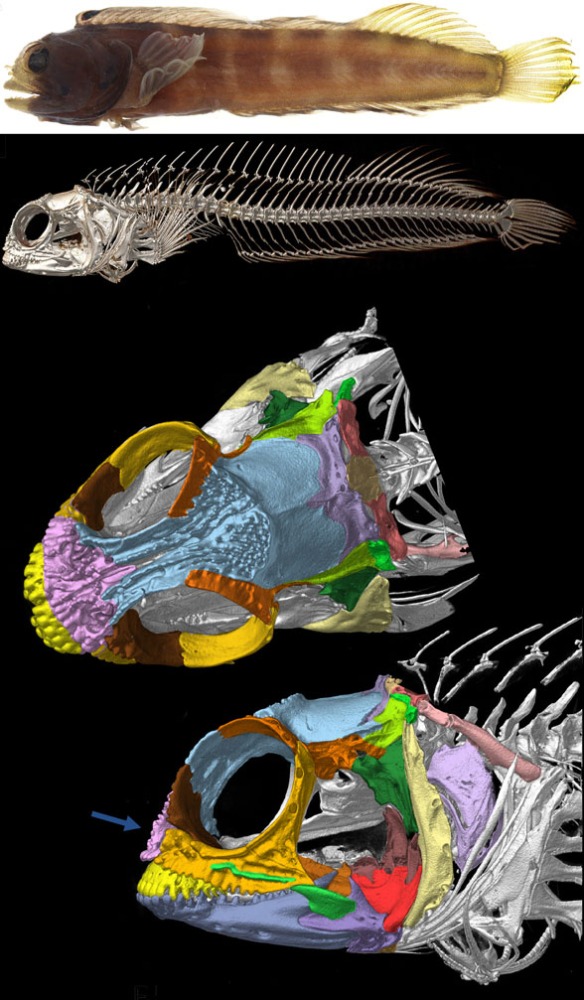
Housekeeping the ray-fin fish clade continues unabated,
testing taxa together that rarely get tested together in trait analysis.
References
Brauer A 1901. Über einige von der Valdivia-Expedition gesammelte Tiefseefische und ihre Augen. Sitzungsberichte der Gesellschaft zur Beförderung der Gesamten Naturwissenschaften zu Marburg 8: 115–130.
Konstantinidis P and Johnson GD 2016. Osteology of the telescope fishes of the genus Gigantura (Brauer, 1901), Teleostei: Aulopiformes. Zoological Journal of the Linnean Society 179(2):338–353.
Regan CT 1924. The morphology of the rare oceanic fish, Stylophorus chordatus, Shaw; based on specimens collected in the Atlantic by the “Dana” expeditions, 1920–1922. Proceedings of the Royal Society B 96(674): PDF
Shaw G 1791. Description of the Stylephorus chordatus, a new fish. Transactions of the Linnean Society of London, 2d Ser: Zoology 1:90–92.
wiki/Stylephorus
wiki/Sarcastic Fringehead
wiki/Acanthemblemaria
wiki/Gigantura


